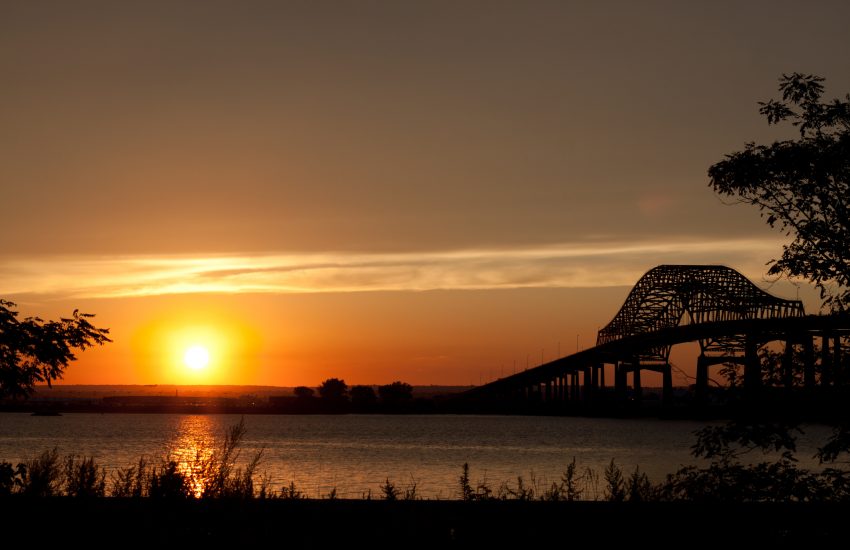If the hallmarks of Jersey summers are languid days down the Shore, time-off, and welcomed passivity, the New Jersey Department of Environmental Protection missed the memo. Late last month, the NJDEP roused potential responsible parties from their summer slumber with its unexpected announcement that the state intends to aggressively pursue the lower Hackensack River as a federal Superfund site in accordance with the Comprehensive Environmental Response, Compensation and Liability Act. The NJDEP’s mid-summer announcement puts past and present industrial players throughout the Garden State on high alert that the agency is armed and ready to remediate its waterways that have been contaminated with mercury, polycyclic aromatic hydrocarbons, and other toxic pollutants for decades.
Once editorially coined a “toxic stew,” the Hackensack River has been formally earmarked for a full-scale and federally monitored environmental makeover. The proposed cleanup of a 23-mile stretch of the tidally influenced Hackensack River, from the Oradell Dam to the Newark Bay, is expected to restore the river as an economic, environmental and recreational asset for the people. The Hackensack Riverkeeper, a local nonprofit conservancy group, has been working to obtain Superfund designation for the river since 2015.
Superfund status under CERCLA is considered a “super” tool because it authorizes the government to seek recovery costs from probable polluters. While there is no estimate of what a full-scale cleanup of the Hackensack will cost, waterways are among the most expensive polluted sites to remediate. A planned clean-up of the Passaic river, for example, is expected cost $1.4 billion. The extent of the pollution is said to be so severe that some stretches of the Hackensack River have seen the highest concentrations of mercury contamination recorded among freshwater ecosystems in the United States, though derivative of legacy mercury contamination from decades ago and miles away that has been redistributed throughout the river. However, mercury is certainly not the only prevalent toxicity in the river. A 2017 report by contractors for the EPA reveals not only elevated levels of mercury, but likewise treacherous findings of cadmium, lead, cancer-causing dioxin, and PCBs among hundreds of sediment samples, confirming that the river’s pollution poses a discernible health threat to local humans and wildlife alike.
Genealogy of Pollution of the River:
The Hackensack River, from end to end, extends about 45 miles, originating in Rockland County, N.Y., and emptying into the Newark Bay as a back-chamber of the New York Harbor. It flows through and drains into the New Jersey Meadowlands. The Hackensack River first fell victim to the effects of human alteration as early as the 19th century with the dawn of the industrial revolution, which brought about mass forest clearings in tandem with the construction of roads, railways, heavy manufacturing facilities, storage tanks, and chemical processing plants in the area. In 1921, the Oradell Reservoir Dam was constructed, dramatically and permanently altering the river’s state from a free-flowing stream into a brackish estuary. Thereafter, untreated sewage began polluting the river and, by the 1980s, water quality studies showed that the river was significantly impaired with low oxygen levels and nutrient pollution. Industrial pollution of the river subsided in the late 2000s, mostly as a result of the systematic decline of manufacturing in the metropolitan region. However, today the river continues to suffer not only from the effects of legacy industrial pollution, but from urban and hazardous waste-site runoff pollution, as well as municipal sewage discharges from sanitary sewer overflows and combined sewer overflows.
It certainly comes as no surprise to the twenty municipalities along the lower Hackensack that the river has drawn the attention of the nation’s most vigilant environmentalists. The EPA has been managing long-term remediation of four Superfund sites throughout the Hackensack watershed with the overarching mission to protect local waterways for quite some time. The EPA specifically began its examination of the Hackensack River back in 2015 to see if the river met Superfund criteria.
Next Steps
Ironically, the Superfund status comes at a time when the Hackensack River is cleaner than it has been in decades, largely due to the vigilance of the conservancy watchdogs coupled with CWA regulations. Nonetheless, there is work to be done and money to be spent. The Hackensack Riverkeeper estimates that it would take more than 300 years for the organization to sue all the polluters responsible for the contamination. Now, with the help of the EPA and the Superfund status under CERCLA, potential responsible parties can expect the inevitable Notice of Liability letters being issued by the EPA and arriving in their mail in the not-too-distant future.

